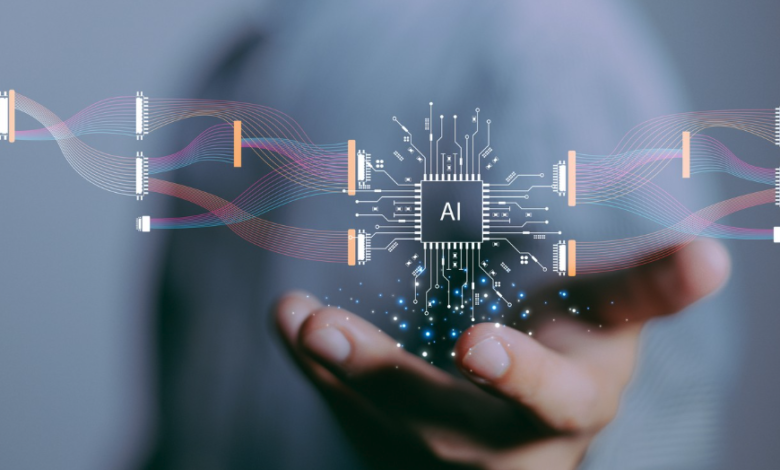
Breakthroughs in artificial intelligence (AI) are coming at an accelerating pace and, with them, immense economic and societal benefits across a wide range of sectors. AI’s predictive capabilities along with the automation it enables aid in operational optimization, resource allocation, and personalization applications. However, AI’s benefits are accompanied by growing concerns about potential misuse that must be addressed to ensure public safety and trust in this revolutionary technology. Regulations are needed to ensure that AI is developed and deployed in ways that align with societal values, safety principles, and ethical standards.
Considerations for AI Regulation
There is debate about the role of government in AI regulations. Supporters of tighter regulation point towards it as critical to ensuring consumer trust in AI tools. Detractors are concerned that regulations will create a disadvantage for smaller firms that do not have the resources of multinational tech giants. This debate comes amidst rapid innovation and increasingly complex AI algorithms being embedded into an increasing number of products across sectors. This leaves regulators struggling to find a balanced framework that will guide the development of responsible AI without impeding innovation.
Societal Considerations
AI has significant implications for employment, education, and social equality. Regulations should ensure that AI algorithms promote fairness relative to societal values and human decision-making by helping to manage and mitigate negative impacts, such as job displacement due to automation, promoting re-skilling programs, ensuring equitable access to AI technologies, and fostering inclusive development processes.
Regulations can enforce ethical standards in AI development, ensuring that AI systems are designed with fairness, accountability, and transparency in mind. This includes addressing biases in AI algorithms, protecting against misuse, and ensuring that AI respects human rights and values. Regulations are also necessary for overseeing or limiting the development and deployment of AI systems that may cause harm like invasive surveillance technologies, or tools that could undermine democratic processes.
Data Privacy and Security Considerations
With AI systems often relying on large datasets, including personal information, regulations can help protect individuals’ data and privacy. They can enforce data protection standards, consent requirements, and limitations on data usage, ensuring that AI does not infringe upon individuals’ privacy rights.
Regulations are crucial for ensuring the safety and security of AI systems. They can set guidelines for the robustness and reliability of AI, minimizing risks associated with failures or unintended consequences. This is particularly important in critical areas such as healthcare, transportation (like autonomous vehicles), and finance, where AI malfunctions could have severe consequences.
Innovation and Collaboration Considerations
AI technology transcends national borders and regulations play a crucial role in facilitating international collaboration and standards. Global cooperative innovation is vital for addressing global challenges such as AI security, ensuring AI system interoperability, and managing the global impact of AI on labor markets.
Regulations can create a level playing field that encourages healthy competition and innovation while building public trust in AI technologies. By setting clear standards, regulations can reduce uncertainties that might hinder investment and development in AI. Trust is essential for the widespread adoption of AI technologies, and regulations can help assure users that AI systems are safe and reliable.
A New Global Standard for AI Regulation
In February 2024, all 27 member states of the European Union (EU) endorsed the Artificial Intelligence Act (AI Act), which is the world’s first, comprehensive AI legislation. The AI Act establishes a broad definition for AI that can apply to various entities, including providers, deployers, importers, and distributors of AI systems. This legislation will leverage a risk-based classification system which allows the law to evolve along with AI technology. Most systems will fall into the lower risk categories, but all will require significant procedural and transparency obligations about their use.
This new legislation also prohibits AI systems deemed to include “unacceptable risks” that represent threats to people including the use of subliminal techniques to influence behavior or those that target vulnerabilities in specific groups. The ‘high-risk’ category applies to 5-15% of AI systems and represents the majority of obligations in the AI Act.
These include safety components and products already regulated by EU safety legislation as well as standalone AI systems used for both public and private sector applications like education and recruitment, biometric identification, determining access to essential services, and the management of critical infrastructure and border security.
Legal experts and technologists following the AI Act expect it to be formally adopted in the summer of 2024 with full enforcement to follow 2 years later. There are exceptions where enforcement will come into effect earlier. This includes prohibitions on the highest risk systems, which will see enforcement 6 months after the act is adopted. Rules surrounding general purpose AI (GPAI) will be enforceable after twelve months. Drafts of the legislation are available publicly. They provide businesses with the requirements they will need to meet to integrate AI into their product development and operational processes.
Prepare Early
The EU hopes that the AI Act will serve as the global standard for regulating artificial intelligence. It is a strong litmus test for the types of regulations other countries are looking to implement soon. Tech companies should review their regulatory frameworks and ensure that they align with the regulations laid out by the EU. These regulations will encourage public trust and ensure that society and industry continue to reap the transformative benefits of AI technology innovation.





